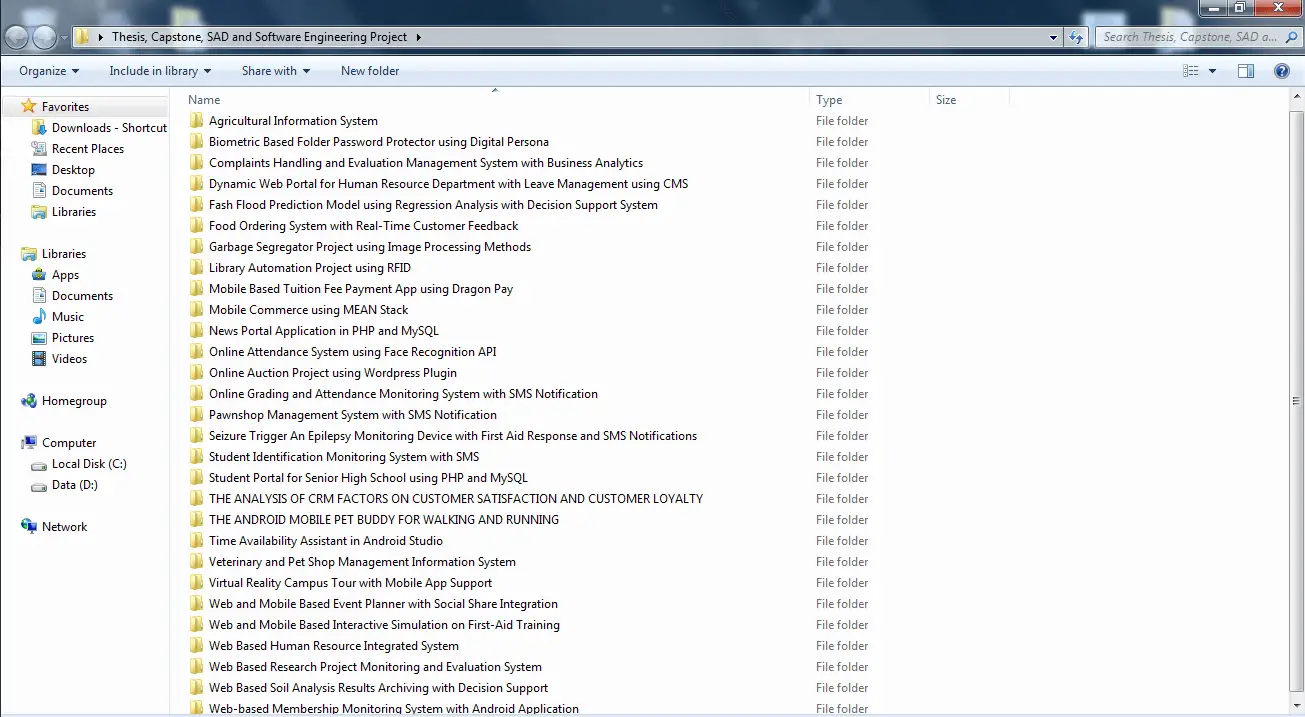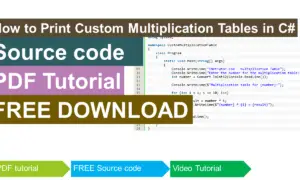Title: Web Based Human Resource Information System
Introduction:
Human resource management practices are now considered as one of the key contributing factors to the success of an organization. The organizations are putting increased emphasis on the policies and practices of HRM to gain competitive advantage. An efficient software of making this human resource management endeavor is a great help.
To address this concern the researcher would like to propose a Human Resources Information System (HRIS) for small to medium sized business or organization and institution. Particularly, this system has the following features; Personal Information Management, Advanced Leave Management, Time & Attendance Tracking, Employee Performance Management, Recruitment and Advanced Reporting, and the main feature which is the Performance Evaluation of Employees.
As a result of HRIS development and implementation in many organizations, several payroll functions are being transferred from accounting departments to HR departments. Beyond these basic activities, many other HR activities can be affected by the use of an HRIS, specifically employee’s evaluation and promotion.
III. Literature Summary:
Effective HRM, in order to provide competitive advantages, requires adequate updated information on current employees, as well as potential employees in the labour market. IT evolution has improved a technique of collecting this information through the development of HRIS systems (Kavanagh, Mohan, 2009, p. 5). HRIS includes systems and processes that connect the function of HRM and information technology. Enterprises often choose to introduce this information system after the successful implementation of ERP (Enterp rise Resource Planning) and CRM (Customer Relationship Management) solutions, aiming to improve the processes associated with making decisions about employees. Information technology have enabled the broad implementation of HRIS applications and help companies to improve efficiency in general by increasing the efficiency of HRM (Nuasair, Parsa, 2007, p. 70).
HRIS advantages can be systematized according to Kovach (Kovach, et.al., 2002, p. 47) as follows:
- Increase competitiveness by improving the operational transactions in the HR department;
- The ability to implement a number of different operations related to HR;
- Shift the focus from the operational (transaction) HR information to strategic HR information;
- Include employees as an active part of the HRIS and
- Re-engineering the entire HR department.
The increased use of web technology to deliverHR will leave HR specialists more time for strategic decision making and that outsourcing of people-management activities will liberate HR specialists to perform more strategic activities (Kulik& Perry, 2008). According to Ulrich (2007; 2009) as one of the strategic partners, the HR manager derives benefit from IHRS, to
disseminate and execute the strategy withinthe organization. These systems enable employees to manage much of their own HR administrative work. They can take care of many routine transactions whenever they wish, because automated systems don’t keep office hours.
In addition to their former operational role, HR professionals can also act as a competency manager by arranging the right people to the right positions in the right time with their new strategic architecture role (Gürol, Wolff & Ertemsir, 2010). HRIS is thought to contribute to overall business performance by fulfilling or at least supporting the tasks of data storage and retrieval, of serving as primary administrative support tools, of reporting and statistics as well as of program monitoring (Ostermann, Staudinger & Staudinger, 2009). HRIS plays an important role for any organization to effectively manage its human assets. Many organizations have adopted HRIS to assist their daily human resources operations. HRIS must align and satisfy the needs of the organization and its users in order to be successful (Noor & Razali, 2011).
However, HR departments need to recognize some of the current limitations of web technology and its integration to the HRIS backbone. Similar to most e-business ventures, security of private HR information is a top priority. Organizations looking seriously into internet enabling of their HR businesses should evaluate the authentication, security, access rules, and audit trails related to service providers’ networks, servers, and applications (Karakanian, 2000). On the other hand there can be undesired and unexpected consequences of HRIS. Undesired consequences refer, for instance, to an increase of quantity but a decrease of quality of applicants in e-recruiting (Strohmeier, 2009).
Project Description:
Human Resource information System is a web-based but could be installed as a stand alone computer software. The system has the following features:
- Personal Information Management
- Advanced Leave Management
- Time & Attendance Tracking
- Employee Performance Management and Evaluation
- Recruitment
- Advanced Reporting
PIM – Personnel Information Management
Maintaining employee records is a basic HR function, however if you do not have a proper storage mechanism and reporting tool, this can be extremely challenging and it can result in employee dissatisfaction and other issues. You will also waste days trying to figure out data for your reports, writing formulas and you may end up with no guarantee on the accuracy of these reports.
The PIM module offers you comprehensive employee profiles that capture the following: Personal Details, Job History, Salary History, Contacts, Dependents, Terminations and many other important data sets. This centralized system will unleash the capabilities of report generation with a variety of selection criteria and filters.
Leave /Time off Management
Manage all employee leave requests with ease via our useful reports. The Leave/ time off types based on different departments
- International calendar holidays for accurate leave calculation
- Configurable work weeks
- Custom leave years (calendar or financial year)
- Leave restriction and other compliance rules
- Leave accrual settings based on employee status, job titles, years of service or other custom fields
- Leave carry forward rules
- Email notifications on all leave transactions
- Graphical reports, CSV extractions and dashboard integration
Time & Attendance Management
The Time module provides companies with a combination of an Attendance Management as well as a Timesheet Management solution. Attendance information can be input manually into the system or can be captured via a biometric device and uploaded into the Time module.
The timesheet feature allows employees to enter and then submit timesheets containing the number of hours they have worked on specific projects and activities. Both these features provide HR Administrators with the ability to view detailed attendance and timesheet data. This will assist them when making strategic decisions to improve employee productivity and efficiency, and ultimately reduce waste and minimize loss due to employee downtime.
Recruitment
The recruitment module allows you to manage your vacancies and candidates with the ability to assign designated hiring managers. You can receive resumes into the system for respective vacancies by interfacing your company website’s career page to directly post vacancies from HRIS. You can also connect to RSS feeds and Facebook, to post jobs on your company page.
Features include:
- Candidate resume repository with history
- Archives for future use
- Shortlist using resumes parsing to read resumes and keywords
- Configurable screening questionnaires
- Interview scheduling
- Hiring approvals and transferring employees to PIM once hired
Performance
Another natural attachment to HRIS. While simplifying the performance review process you can communicate the key performance indicators for each job title allowing the employees to understand and achieve your expectations.
Features:
- Simply create performance reviews using KPI’s specific to each job title.
- Let employees scale their performance through their performance reviews.
- Allows employees to understand employer’s expectations.
Training
This module lets administrators & supervisors create and manage employee training courses effectively, while employees are able to keep track of their training courses.
- Manage training programs in your organization in a centralized location
- Allocate budgets for training sessions to follow your company’s financial plan
- Have training coordinators individually handle every training session in the organization.
- Keep track of employees who have successfully completed certain training programs, for career succession planning.
ESS – Employee Self Service
Employee self-service is a powerful tool providing employees of the company with the ability to view relevant information such as personal information‚ updating personal information with web-enabled PC without the assistance of HR staff. The functionality of this module spans through the entire system‚ making information available anywhere‚ anytime. Of course all information is subject to company defined security policy‚ where employees can only view the information he / she is authorized to. Time and cost saving effects from this solution are tremendous.
Features:
- Allow employees to log-in to the system and update their personal information independently.
- The ESS users will have limited access within the system as a security measure.
- Since the application comprises a holiday management module, the leave application and the approval from their supervisor can be performed from the system itself.
- An employee may view their leave summary to keep track of their leave entitlements, leave taken and leave carried forward.
Asset Tracker
The asset tracker is a great value addition to ensure all company owned resources assigned to employees are tracked. ESS users, managers and other admin users will know what assets are assigned to employees and also can keep track of other useful information related to assets.
Maintain asset information including assets specifications, brands, and vendors Track warranty information Full history of ownership Service history and purchasing details for assets Attach documents such as Word, Excel, PDFs to assets


